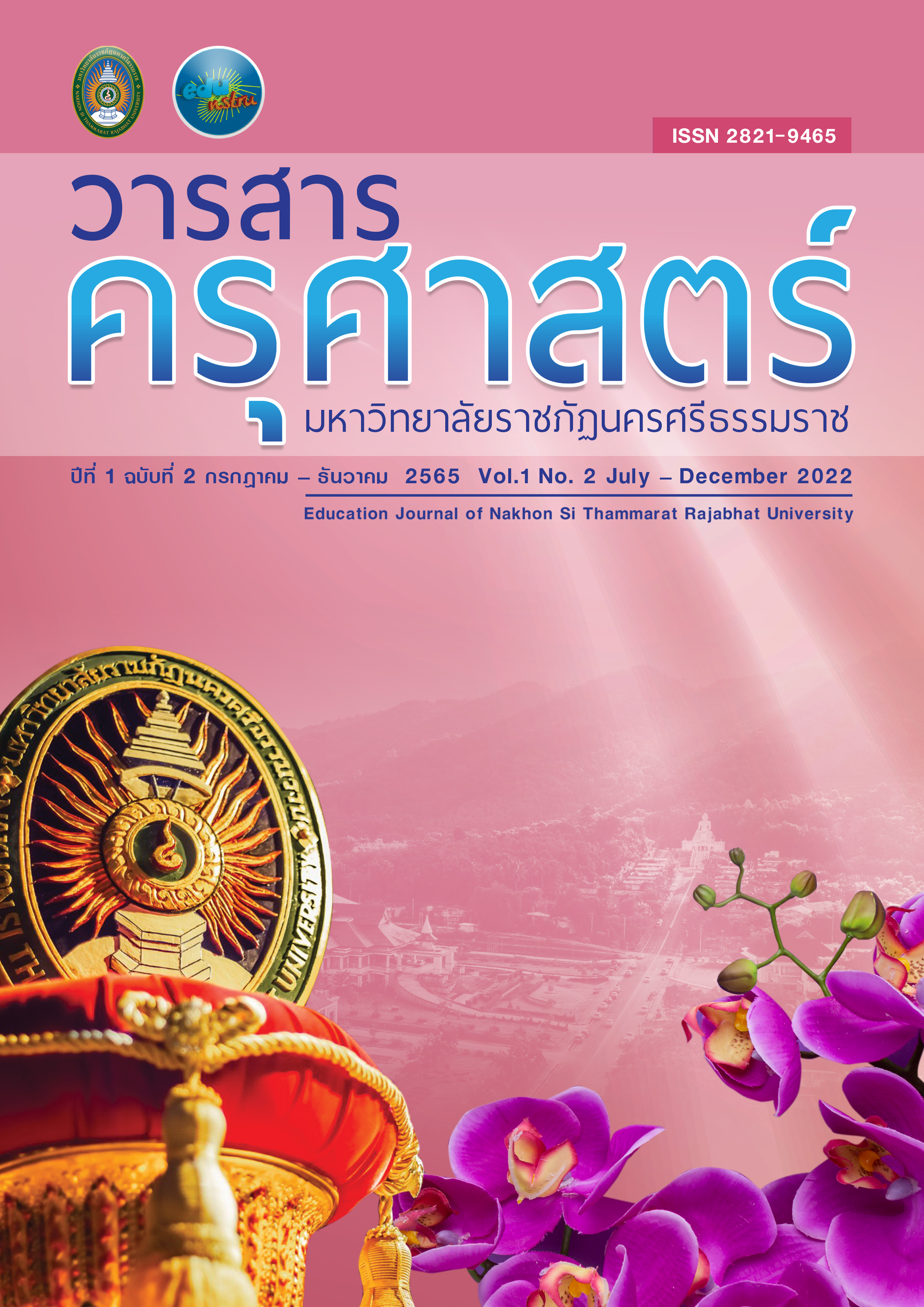Practical Mathematics: Addition with Carrying and Subtraction with Borrowing with Based Ten Blocks
Main Article Content
Abstract
Practical mathematics connects two important mathematical worlds at the school level. Specifically, the conceptual physical world and the symbolic world, which evolve in a hierarchical manner and independently. In order to promote numerical calculation, the grade 3 mathematics curriculum emphasizes the arithmetic operations of addition and subtraction by manipulating objects. Addition uses the concept of carrying and subtraction with borrowing. The decimal block is a crucial tool for making the connection between the two ideas.
The decimal block thus contributes to practical mathematics through picking up, touching physical objects, and performing arithmetic operations. The decimal block is a physical actuator and a semi-concrete material, allowing students to use their senses grasp and move by thinking used for number instructions and operations emphasis on real practice. For addition content, students use substitutions when the unit digit exceeds a block of ten. And subtracting students using borrowing when the unit digit is not enough to block the full ten for the top.
Article Details

This work is licensed under a Creative Commons Attribution-NonCommercial-NoDerivatives 4.0 International License.
บทความที่ได้รับการตีพิมพ์เป็นลิขสิทธิ์ของวารสารครุศาตร์ มหาวิทยาลัยราชภัฏนครศรีธรราช
ข้อความที่ปรากฏในบทความแต่ละเรื่องในวารสารวิชาการเล่มนี้เป็นความคิดเห็นส่วนตัวของผู้เขียนแต่ละท่านไม่เกี่ยวข้องกับวารสารครุศาสตร์ มหาวิทยาลัยราชภัฏนครศรีธรรมราช
References
ลักขณา สริวัฒน์. (2557). จิตวิทยาสำหรับครู. กรุงเทพฯ : โอเดียนสโตร์.
ฮิโตะทสึมะทสึ, ชิน, โยะชิโอะ โอะคะดะ, โชอิจิโระ มะจิดะ และคณะ.(2554). คณิตศาสตร์สำหรับชั้นประถมศึกษาปีที่ 3 เล่ม 1 ใน ไมตรี อินทร์ประสิทธิ์ และมะซะมิ อิโซะดะ (บก.) (แปลจาก Mathematics for Elementary School 3rd Volume1. โดย ไมตรี อินทร์ประสิทธิ์ และอรรถ อินทร์ประสิทธิ์). ขอนแก่น : คลังนานาธรรม.
Digi-Block, Inc. (2022, November 13). About is. Retrieved from http://www.digiblock.com/home/.
Kim, R., & Albert, L.R. (2014). The History of Base-Ten-Blocks: Why and Who Made Base-Ten-Blocks? Mediterranean journal of social sciences, 5, 356-365.
Moyer, P. S. (2001). Are we having fun yet? How teachers use manipulatives to teach mathematics. Educational Studies in Mathematics, 47, 175–197.
National Council of Teachers of Mathematics (NCTM). (2000). Principles and standards for school mathematics. Reston, VA: NCTM
Nurnberger-Haag, J. (2018). Borrow, Trade, Regroup, or Unpack? Revealing How Instructional
Metaphors Portray Base-Ten Number. New York: Springer.
Silveira, E. (2021). A Study on the indications to the use of Base Ten Blocks and Green Chips
in Mathematics textbooks in Brazil. The Mathematics Enthusiast.
Tall, D. O. (2013). How Humans Learn to Think Mathematically. New York: Cambridge
University Press. ISBN: 9781139565202.
Tall, D. & Witzke, I. (2019). MINTUS: Beiträge zur mathematischen, naturwissenschaftlichenund technischen Bildung. Wiesbaden: Springer.
Tall, D. (2020a). Making Sense of Mathematical Thinking over the Long Term: The Framework of Three Worlds of Mathematics and New Developments. Draft.To appear in Tall, D. & Witzke, I. (Eds.): MINTUS: Beiträge zur mathematischen, naturwissenschaftlichen und technischen Bildung. Wiesbaden: Springer.
Web Minder. (2022, November 13). Zoltan Dienes Web Site. Retrieved from http://www.zoltandienes.com.

